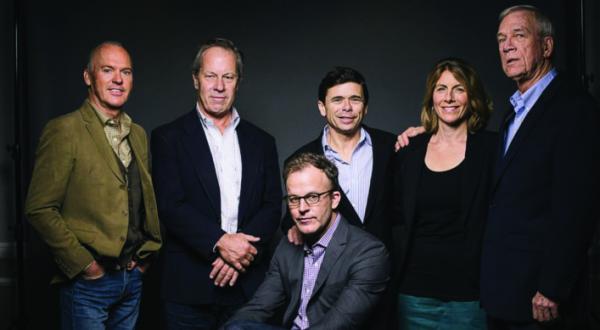For centuries, investigative journalism is widely believed to have played an instrumental role in guarding the interests of society and giving a chance for the otherwise silenced victims of wars, natural crises, and sexual assaults.
The same can be said of the role of cinema in raising people’s awareness on divisive or underrepresented issues, and piquing the public’s attention to the major human stories that require public consideration. So what of a film that tells the story of one of the leading investigative reports that revealed scandalous facts about some of the biggest religious institutions in the world?
 “Spotlight”, based on the true story of the Boston Globe’s investigative team, achieved huge success, both critically and in box offices, despite its plot not necessarily adhering to a commercial formula. The film, starring Michael Keaton, Rachel McAdams, and Mark Ruffalo, won the Best Picture and Best Original Screenplay at the Academy Awards, where it received a total of six nominations.
“Spotlight”, based on the true story of the Boston Globe’s investigative team, achieved huge success, both critically and in box offices, despite its plot not necessarily adhering to a commercial formula. The film, starring Michael Keaton, Rachel McAdams, and Mark Ruffalo, won the Best Picture and Best Original Screenplay at the Academy Awards, where it received a total of six nominations.
The film tackles the controversial issue of child sex abuse by a number of Catholic priests in Boston, inspired by the actual series of stories published by the team portrayed in the film.
On 6 January 2002, the Spotlight team, including reporters Matt Carroll, Sacha Pfeiffer, Michael Rezendes, and editor Walter V. Robinson, published their first story, entitled “Church Allowed Abuse by Priest for Years”. The article shook not only for the Boston community, but thousands of readers around the world.
“Since the mid-1990s, more than 130 people have come forward with horrific childhood tales about how former priest John J. Geoghan allegedly fondled or raped them during a three-decade spree through a half-dozen Greater Boston parishes.” This was the captivating lead of their story.
The team followed up the story with a series of articles that revealed the involvement of other priests in the scandal and the church’s efforts to protect them over decades. They found some court records and other documents that identified 19 priests accused of paedophilia. When published, the scandal encouraged thousands of sexual abuse victims from the US and other countries to file lawsuits against a large number of present and former priests.

In addition to concentrating on the issue itself, which became one of the most talked-about issues of the century, the film paid special attention to the methods the journalists used to get the story, investigated it, interviewed the victims and the threats they encountered throughout the process. The film shed light on aspects of the everyday lives of the journalists and the pressures and strains they faced. The film closes with a short scene, in which the team receives dozens of calls from victims who want to tell their stories and report certain priests.
This scene raises questions as to why those subjected to sexual assaults are reluctant to break their silence initially, and what inspires them to speak out
This is touched upon in the conversations between the journalists portrayed in the film, in which they point to the absolute authority of the Church, the fear of challenging the largest religious institution, and the support the priests received from the church as the possible answers.
The director, Tom McCarthy, attempted to faithfully recreate the journalists’ appearance and personalities to give some credibility to the movie. Along with the cast, he conducted dozens of interviews with the real Boston globe team. He also insisted on inviting them to the Oscars ceremony and thanked them in his acceptance speech.
“We made this film for all the journalists who have and continue to hold the powerful accountable, and for the survivors whose courage and will to overcome is really an inspiration. We have to make sure this never happens again,’’ he said.




